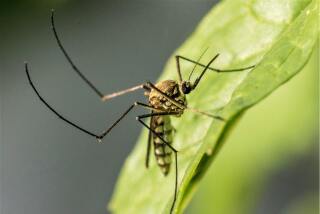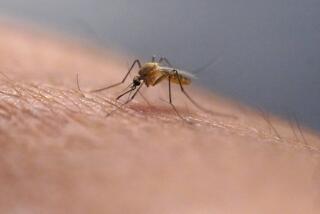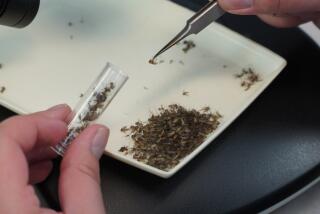Texas epicenter of worst West Nile outbreak in years, CDC says
HOUSTON -- There’s been an alarming increase in the number of West Nile cases nationwide, with more than 1,100 reported, according to officials from the Centers for Disease Control and Prevention.
The latest CDC figures released Wednesday show the national total for West Nile infections is three times as many as usually seen at this point in the year, officials said. Seventy-five percent of those cases were reported in five states -- Louisiana, Oklahoma, Mississippi, South Dakota and Texas -- with about half in Texas.
“We are in the midst of one of the worst West Nile virus outbreaks ever seen in the U.S.,” Dr. Lyle R. Petersen, director of the CDC’s Division of Vector-Borne Infectious Diseases, said during a briefing.
West Nile cases can be reported in various ways, as mild fevers or more serious diseases.
Of the West Nile infections reported nationwide, 629 were of the more serious neuroinvasive diseases, Petersen said.
Currently, 1 out of every 150 people infected with the virus develops the more serious illnesses, he said, such as West Nile encephalitis, meningitis or poliomyelitis. More than half of those infected in Dallas County this year developed the more severe illnesses, an outbreak that drew the attention of President Obama, who was briefed by CDC officials Tuesday.
Petersen said it was not clear whether the number of serious illnesses had increased or if reporting had simply improved. Those with serious forms of West Nile-related illnesses are usually admitted to hospitals, where officials test and report results.
Those with the milder West Nile fever may not see a doctor or get tested. Only an estimated 2% to 3% of such infections are reported, Petersen said.
Those who become infected develop lifelong immunity, said Petersen, who added that he was infected in 2003 when he was bit by a mosquito during a jog.
So far, 41 West Nile deaths have been reported nationwide, and West Nile infections appeared to be “trending upwards,” Petersen said.
Petersen said it was unclear why West Nile infections increased in so many areas this year, or why Dallas County has had such a large outbreak, with 270 cases and 11 deaths. During the last eight years, Dallas County saw 10 West Nile deaths.
West Nile originated in the Eastern U.S. and spread west, but during the last 12 years Southern states have usually been affected earlier than the North because of warm weather, Petersen said.
He said the “unusually mild winter, early spring and summer” this year might have aided transmission of the virus in Texas and other states with outbreaks, plus a “complicated ecological cycle” involving transmission from insects to birds and humans.
“Why is this occurring in Dallas or elsewhere as opposed to Houston or some other cities? We don’t know,” Petersen said, calling West Nile “a very focal disease,” meaning a lot of cases may crop up at one site and only a few a hundred miles away because of variations in local ecology.
The CDC has sent two teams to Texas and spent $2.5 million to help state health officials fight the outbreak, Petersen said. The state has reported 586 West Nile infections and 25 deaths. Texas’ public health director said during the briefing that at least four additional deaths were reported this week: one in Dallas, two in neighboring Tarrant County and one in nearby Collin County.
Dr. David Lakey, director of the Texas Department of State Health Services, said officials plan to release an updated tally of West Nile infections and deaths at 4 p.m. Central time on Wednesday.
He said 2012 is shaping up to be the state’s worst West Nile season since 2003, when Texas saw 40 people died from West Nile illnesses.
Texas officials have reduced the turnaround time for West Nile tests from 10 to two days “so we can have better real-time information about the amount of virus that’s out there,” Lakey said.
Last week Dallas County opted to begin aerial pesticide spraying of 362,000 acres to kill mosquitoes that carry the virus. Houston’s Harris County was scheduled to begin aerial spraying of 63,000 acres late Wednesday.
“All the science has said aerial spraying is safe, and it’s been shown in Sacramento, Houston, Boston” and other areas, Lakey said.
The spraying costs $1.87 an acre, and is being paid for with federal and state money, nearly $3 million so far, Lakey said.
ALSO:
Prince Harry in Vegas: Snapped frolicking in the nude
Ft. Hood suspect should be forcibly shaved, prosecutors say
Washington state man arrested for alleged threats to President Obama
More to Read
Sign up for Essential California
The most important California stories and recommendations in your inbox every morning.
You may occasionally receive promotional content from the Los Angeles Times.










